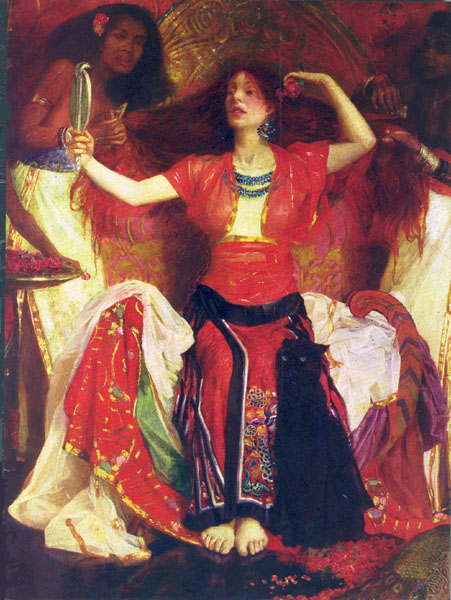
For more than two thousand years, Jezebel has been saddled with a reputation as the bad girl of the Bible, the wickedest of women. This ancient queen has been denounced as a murderer, prostitute and enemy of God, and her name has been adopted for lingerie lines and World War II missiles alike. But just how depraved was Jezebel?
In recent years, scholars have tried to reclaim the shadowy female figures whose tales are often only partially told in the Bible. Rehabilitating Jezebel’s stained reputation is an arduous task, however, for she is a difficult woman to like. She is not a heroic fighter like Deborah, a devoted sister like Miriam or a cherished wife like Ruth. Jezebel cannot even be compared with the Bible’s other bad girls—Potiphar’s wife and Delilah—for no good comes from Jezebel’s deeds. These other women may be bad, but Jezebel is the worst.1
Yet there is more to this complex ruler than the standard interpretation would allow. To attain a more positive assessment of Jezebel’s troubled reign and a deeper understanding of her role, we must evaluate the motives of the biblical authors who condemn the queen. Furthermore, we must reread the narrative from the queen’s vantage point. As we piece together the world in which Jezebel lived, a fuller picture of this fascinating woman begins to emerge. The story is not a pretty one, and some—perhaps most—readers will remain disturbed by Jezebel’s actions. But her character might not be as dark as we are accustomed to think ng. Her evilness is not always as obvious, undisputed and unrivaled as the biblical writer wants it to appear.
The story of Jezebel, the Phoenician wife of King Ahab of Israel, is recounted in several brief passages scattered throughout the Books of Kings. Scholars generally identify 1 and 2 Kings as part of the Deuteronomistic History, attributed either to a single author or to a group of authors and editors collectively known as the Deuteronomist. One of the main purposes of the entire Deuteronomistic History, which includes the seven books from Deuteronomy through 2 Kings, is to explain Israel’s fate in terms of its apostasy. As the Israelites settle into the Promised Land, establish a monarchy and separate into a northern and a southern kingdom after the reign of Solomon, God’s chosen people continually go astray. They sin against Yahweh in many ways, the worst of which is by worshiping alien deities. The first commandments from Sinai demand monotheism, but the people are attracted to foreign gods and goddesses. When Jezebel enters the scene in the ninth century B.C.E., she provides a perfect opportunity for the Bible writer to teach a moral lesson about the evil outcomes of idolatry, for she is a foreign idol worshiper who seems to be the power behind her husband. From the Deuteronomist’s viewpoint, Jezebel embodies everything that must be eliminated from Israel so that the purity of the cult of Yahweh will not be further contaminated.
As the Books of Kings recount, the princess Jezebel is brought to the northern kingdom of Israel to wed the newly crowned King Ahab, son of Omri (1 Kings 16:31). Her father is Ethbaal of Tyre, king of the Phoenicians, a group of Semites whose ancestors were Canaanites. Phoenicia consisted of a loose confederation of city-states, including the sophisticated maritime trade centers of Tyre and Sidon on the Mediterranean coast. The Bible writer’s antagonism stems primarily from Jezebel’s religion. The Phoenicians worshiped a swarm of gods and goddesses, chief among them Baal, the general term for “lord” given to the head fertility and agricultural god of the Canaanites. As king of Phoenicia, it is likely that Ethbaal was also a high priest or had other important religious duties. According to the first-century C.E. historian Josephus, who drew on a Greek translation of the now-lost Annals of Tyre, Ethbaal served as a priest of Astarte, the primary Phoenician goddess. Jezebel, as the king’s daughter, may have served as a priestess as she was growing up. In any case, she was certainly raised to honor the deities of her native land.
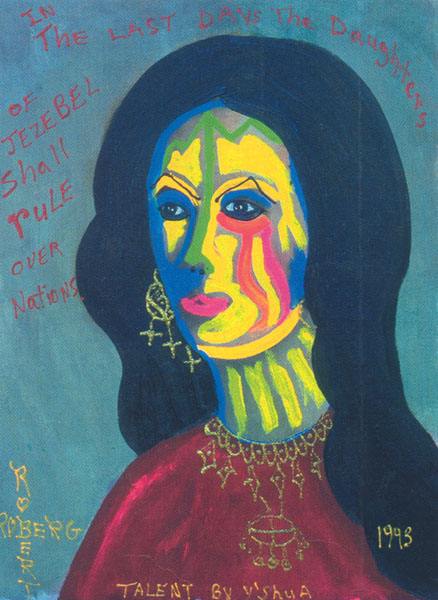
When Jezebel comes to Israel, she brings her foreign gods and goddesses—especially Baal and his consort Asherah (Canaanite Astarte, often translated in the Bible as “sacred post”)—with her. This seems to have an immediate effect on her new husband, for just as soon as the queen is introduced, we are told that Ahab builds a sanctuary for Baal in the very heart of Israel, within his capital city of Samaria: “He took as wife Jezebel daughter of King Ethbaal of the Phoenicians, and he went and served Baal and worshiped him. He erected an altar to Baal in the temple of Baal which he built in Samaria. Ahab also made a ‘sacred post’”a (1 Kings 16:31–33).2
Jezebel does not accept Ahab’s God, Yahweh. Rather, she leads Ahab to tolerate Baal. This is why she is vilified by the Deuteronomist, whose goal is to stamp out polytheism. She represents a view of womanhood that is the opposite of the one extolled in characters such as Ruth the Moabite, who is also a foreigner. Ruth surrenders her identity and submerges herself in Israelite ways; she adopts the religious and social norms of the Israelites and is universally praised for her conversion to God. Jezebel steadfastly remains true to her own beliefs.
Jezebel’s marriage to Ahab was a political alliance. The union provided both peoples with military protection from powerful enemies as well as valuable trade routes: Israel gained access to the Phoenician ports; Phoenicia gained passage through Israel’s central hill country to Transjordan and especially to the King’s Highway, the heavily traveled inland route connecting the Gulf of Aqaba in the south with Damascus in the north. But although the marriage is sound foreign policy, it is intolerable to the Deuteronomist because of Jezebel’s idol worship.
The Bible does not comment on what the young Jezebel thinks about marrying Ahab and moving to Israel. Her feelings are of no interest to the Deuteronomist, nor are they germane to the story’s didactic purpose.
We are not told whether Ethbaal consults his daughter, if she departs Phoenicia with trepidation or enthusiasm, or what she expects from her role as ruler. Like other highborn daughters of her time, Jezebel is probably a pawn, packed off to the highest bidder.
Israel’s topography, customs and religion would certainly be very different from those of Jezebel’s native land. Instead of the lushness of the moist seacoast, she would find Israel to be an arid, desert nation. Furthermore, the Torah shows the Israelites to be an ethnocentric, xenophobic people. In biblical narratives, foreigners are sometimes unwelcome, and prejudice against intermarriage is seen since the day Abraham sought a woman from his own people to marry his son Isaac (Genesis 24:4). In contrast to the familiar gods and goddesses that Jezebel is accustomed to petitioning, Israel is home to a state religion featuring a lone, masculine deity. Perhaps Jezebel optimistically believes that she can encourage religious tolerance and give legitimacy to the worship habits of those Baalites who already reside in Israel. Perhaps Jezebel sees herself as an ambassador who could help unite the two lands and bring about cultural pluralism, regional peace and economic prosperity.
What spurs Jezebel to action is unknown and unknowable, but the motives of the Deuteronomist come through plainly in the text. Jezebel is a bold and impious interloper who has to be stopped. From her own point of view, however, she is no apostate. She remains loyal to her religious upbringing and is determined to maintain her cultural identity.
According to the Deuteronomist, however, Jezebel’s desire is not merely confined to achieving ethnic or religious parity. She also seems driven to eliminate Israel’s faithful servants of God. Evidence of Jezebel’s cruel desire to wipe out Yahweh worship in Israel is reported in 1 Kings 18:4, at the Bible’s second mention of her name: “Jezebel was killing off the prophets of the Lord.”
The threat of Jezebel is so great that later in the same chapter, the mythic prophet Elijah summons the acolytes of Jezebel to a tournament on Mt. Carmel to determine which deity is supreme: God or Baal.
Whichever deity is capable of setting a sacrificial bull on fire will be the winner, the one true God. It is only then that we learn just how many followers of Jezebel’s gods and goddesses are near her at court. Elijah challenges them: “Now summon all Israel to join me at Mount Carmel, together with the four hundred and fifty prophets of Baal and the four hundred prophets of Asherah who eat at Jezebel’s table” (1 Kings 18:19). Whether the grand total of 850 is a symbolic or literal number, it is impressive.
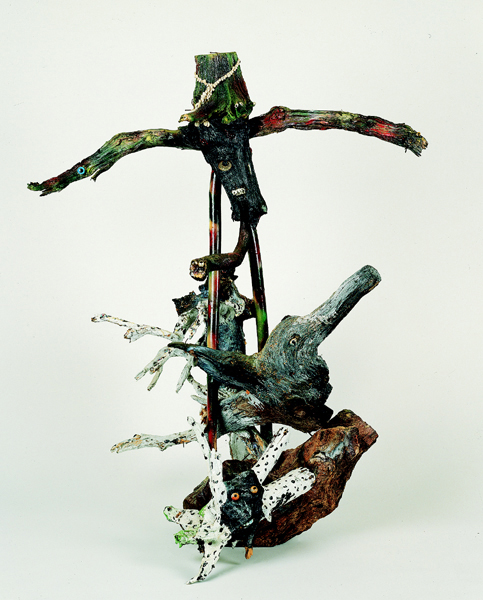
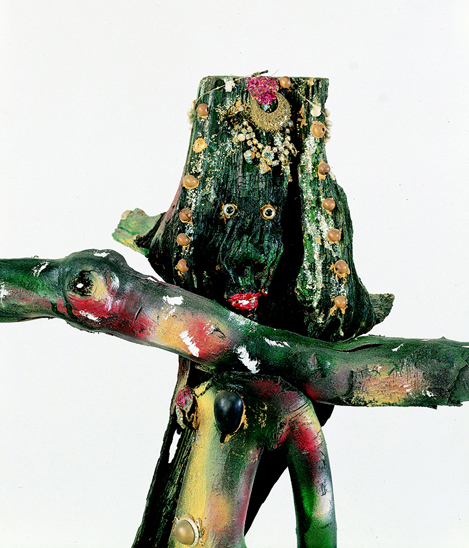
Yet their superior numbers can do nothing to ensure victory; nor can petitions to their god. The prophets of Baal “performed a hopping dance about the altar” and “kept raving” (1 Kings 18:26, 29) all day long in a vain attempt to rouse Baal. They even gash themselves with knives and whoop it up in a heightened emotional state, hoping to incite Baal to unleash a great fire. But Baal does not respond to the ecstatic ranting of Jezebel’s prophets. At the end of the day, it is Elijah’s single plea to God that is answered.
Standing alone before Jezebel’s host of visionaries, Elijah cries out: “O Lord, God of Abraham, Isaac, and Israel! Let it be known today that You are God in Israel and that I am Your servant, and that I have done all these things at Your bidding. Answer me, O Lord, answer me, that this people may know that You, O Lord, are God; for You have turned their hearts backward” (1 Kings 18:36–37). At once, “fire from the Lord descended and consumed the burnt offering, the wood, the stones and the earth;…When they saw this, all the people flung themselves on their faces and cried out: ‘The Lord alone is God, the Lord alone is God!’” (1 Kings 18:38–39). Elijah’s solitary entreaty to Yahweh serves as a foil to the hours of appeals made by Baal’s followers.
Jezebel herself is absent during this all-male event. Nevertheless, her presence is felt and the Deuteronomist’s message is clear. Jezebel’s deities and the huge number of prophets loyal to her are powerless against the omnipotent Yahweh, who is proven by the tournament to be ruler of all the forces of nature.
Ironically, at the conclusion of the Carmel episode, Elijah proves capable of the same murderous inclinations that have previously characterized Jezebel, though it is only she that the Deuteronomist criticizes. After winning the Carmel contest, Elijah immediately orders the assembly to capture all of Jezebel’s prophets. Elijah emphatically declares: “Seize the prophets of Baal, let not a single one of them get away” (1 Kings 18:40). Elijah leads his 450 prisoners to the Wadi Kishon, where he slaughters them (1 Kings 18:40). Though they will never meet in person, Elijah and Jezebel are engaged in a hard-fought struggle for religious supremacy. Here Elijah reveals that he and Jezebel possess a similar religious fervor, though their loyalties differ greatly. They are also equally determined to eliminate one another’s followers, even if it means murdering them. The difference is that the Deuteronomist decries Jezebel’s killing of God’s servants (at 1 Kings 18:4) but now sanctions Elijah’s decision to massacre hundreds of Jezebel’s prophets. Indeed, once Elijah kills Jezebel’s prophets, God rewards him by sending a much-needed rain, ending a three-year drought in Israel. There is a definite double standard here. Murder seems to be accepted, even venerated, as long as it is done in the name of the right deity.
After Elijah’s triumph on Mt. Carmel, King Ahab returns home to give his queen the news that Baal is defeated, Yahweh is the undisputed master of the universe and Jezebel’s prophets are dead. Jezebel sends Elijah a menacing message, threatening to slaughter him just as he has slaughtered her prophets: “Thus and more may the gods do if by this time tomorrow I have not made you like one of them” (1 Kings 19:2). The Septuagint, a third- to second-century B.C.E. Greek translation of the Hebrew Bible, prefaces Jezebel’s threat with an additional insult to the prophet. Here Jezebel establishes herself as Elijah’s equal: “If you are Elijah, so I am Jezebel” (1 Kings 19:2b).3 In both versions the queen’s meaning is unmistakable: Elijah should fear for his life.
These are the first words the Deuteronomist records from Jezebel, and they are filled with venom. Unlike the many voiceless biblical wives and concubines whose muteness reminds us of the powerlessness of women in ancient Israel, Jezebel has a tongue. While her verbal acuity shows that she is more daring, clever and independent than most women of her time, her withering words also demonstrate her sinfulness. Jezebel transforms the precious instrument of language into an evil device to blaspheme God and defy the prophet.
So frightened is Elijah by Jezebel’s threatening words that he flees to Mt. Horeb (Sinai). Despite what he has witnessed on Carmel, Elijah seems to falter in his faith that the Almighty will protect him. As a literary device, Elijah’s sojourn at Horeb gives the Deuteronomist an opportunity to imply parallels between the careers of Moses and Elijah, thus reinforcing Elijah’s exalted reputation. Nevertheless, the timing of Elijah’s flight south makes him look suspiciously like he is afraid of a mere woman.
Jezebel indeed shows herself as a person to be feared in the next episode. The story of Naboth, an Israelite who owns a plot of land adjacent to the royal palace in Jezreel, provides an excellent occasion for the Deuteronomist to propose that Jezebel is not only the foe of Israel’s God, but an enemy of the government.
In 1 Kings 21:2, Ahab requests that Naboth give him his vineyard: “Give me your vineyard, so that I may have it as a vegetable garden, since it is right next to my palace.” Ahab promises to pay Naboth for the land or to provide him with an even better vineyard. But at 1 Kings 21:3, Naboth refuses to sell or trade: “The Lord forbid that I should give up to you what I have inherited from my fathers!” The king whines and refuses to eat after Naboth’s rebuff: “Ahab went home dispirited and sullen because of the answer that Naboth the Jezreelite had given him…He lay down on his bed and turned away his face, and he would not eat” (1 Kings 21:4). Apparently perturbed by her husband’s political impotence and sulking demeanor, Jezebel steps in, proudly asserting: “Now is the time to show yourself king over Israel. Rise and eat something, and be cheerful; I will get the vineyard of Naboth the Jezreelite for you” (1 Kings 21:7).
Naboth is fully within his rights to hold onto his family plot. Israelite law and custom dictate that his family should maintain their land (nachalah) in perpetuity (Numbers 27:5–11). As a Torah-bound king of Israel, Ahab should understand Naboth’s legitimate desire to keep his inheritance. Jezebel, on the other hand, hails from Phoenicia, where a monarch’s whim is often tantamount to law.4 Having been raised in a land of absolute autocrats, where few dared to question a ruler’s wish or decree, Jezebel might naturally feel annoyance and frustration at Naboth’s resistance to his sovereign’s proposal. In this context, Jezebel’s reaction becomes more understandable, though perhaps no more admirable, for she behaves according to her upbringing and expectations regarding royal prerogative.
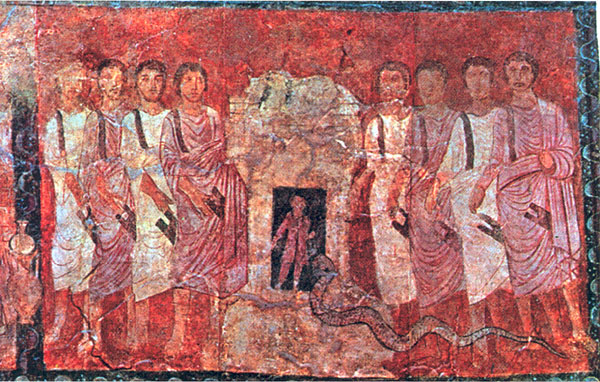
Without Ahab’s direct knowledge, Jezebel writes letters to her townsmen, enlisting them in an elaborate ruse to frame the innocent Naboth. To ensure their compliance, she signs Ahab’s name and stamps the letters with the king’s seal. Jezebel encourages the townsmen to publicly (and falsely) accuse Naboth of blaspheming God and king. “Then take him out and stone him to death,” she commands (1 Kings 21:10). So Naboth is murdered, and the vineyard automatically escheats to the throne, as is customary when a person is found guilty of a serious crime. If Naboth has relatives, they are now in no position to protest the passing of their family land to Ahab.
Yet the details of Jezebel’s underhanded plot against Naboth do not always ring true. The Bible maintains that “the elders and nobles who lived in [Naboth’s] town…did as Jezebel had instructed them” (1 Kings 21:11). If the trickster queen is able to enlist the support of so many people, none of whom betrays her, to kill a man whom they have probably known all their lives and whom they realize is innocent, then she has astonishing power.
The fantastical tale of Naboth’s death—in which something could go wrong at any moment but somehow does not—stretches the reader’s credulity. If Jezebel were as hateful as the Deuteronomist claims, surely at least one nobleman in Jezreel would have refused to assist in the nefarious scheme. Surely one individual would have had the courage to expose the detestable deed and become the Deuteronomist’s hero by spoiling the plan.5
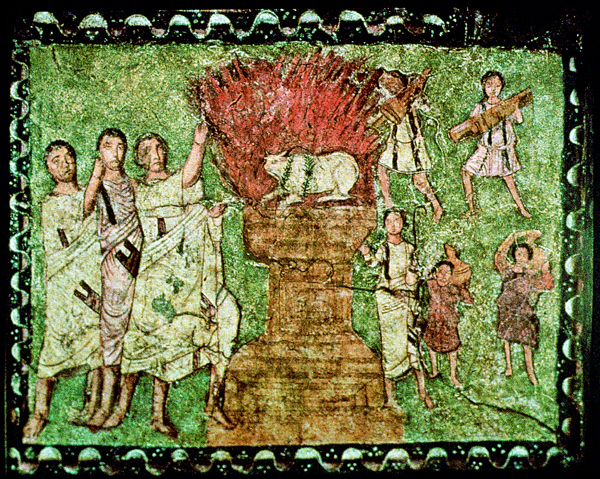
Perhaps the biblical compiler is using Jezebel as a scapegoat for his outrage at her influence over the king, meaning that she herself is being framed in the tale. Traditionally thought to be a narrative about how innocent Naboth is falsely accused, the story could instead be an exaggeration of fact, fabricated to demonstrate the Deuteronomist’s continued wrath against Jezebel.
As a result of this incident, Elijah reappears on the scene. First Yahweh tells Elijah how Ahab will die: “The word of the Lord came to Elijah the Tishbite: ‘Go down and confront King Ahab of Israel who [resides] in Samaria. He is now in Naboth’s vineyard; he has gone down there to take possession of it. Say to him, “Thus said the Lord: Would you murder and take possession? Thus said the Lord: In the very place where the dogs lapped up Naboth’s blood, the dogs will lap up your blood too”’” (1 Kings 21:17–19). But when Elijah confronts Ahab, the prophet predicts instead how the queen will die: “The dogs shall devour Jezebel in the field of Jezreel” (1 Kings 21:23).c Poetic justice, as the Deuteronomist sees it, demands that Jezebel end up as dog food. Ashamed of what has happened and fearful of the future, Ahab humbles himself by assuming outward signs of mourning, fasting and donning sackcloth. Prayer accompanies fasting, whether the Bible explicitly says so or not, so we may assume that Ahab raises his penitential voice to a forgiving Yahweh. For once, Jezebel does not speak; her lack of repentance is implicit in her silence.
When Jezebel’s name is mentioned again, the Bible writer makes his most alarming accusation against her. Ahab has died, as has the couple’s eldest son, who followed his father to the throne. Their second son, Joram, rules. But even though Israel has a sitting monarch, a servant of the prophet Elisha crowns Jehu, Joram’s military commander, king of Israel and commissions Jehu to eradicate the House of Ahab: “I anoint you king over the people of the Lord, over Israel. You shall strike down the House of Ahab your master; thus will I avenge on Jezebel the blood of My servants the prophets, and the blood of the other servants of the Lord” (2 Kings 9:6–7).
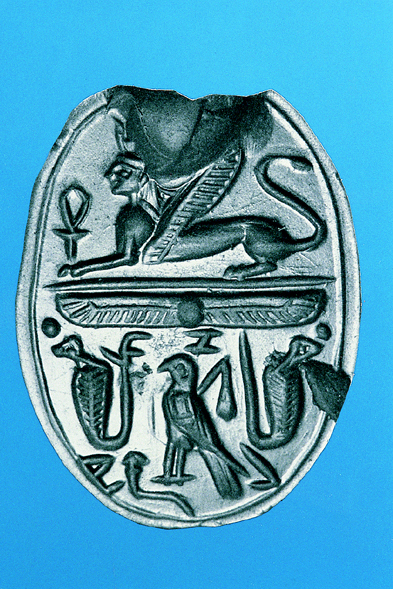
King Joram and General Jehu meet on the battlefield. Unaware that he is about to be usurped by his military commander, Joram calls out: “Is all well, Jehu?” Jehu responds: “How can all be well as long as your mother Jezebel carries on her countless harlotries and sorceries?” (2 Kings 9:22). Jehu then shoots an arrow through Joram’s heart and, in a moment of stinging irony, orders the body to be dumped on Naboth’s land.
From these words alone—uttered by the man who is about to kill Jezebel’s son—stems Jezebel’s long-standing reputation as a witch and a whore. The Bible occasionally connects harlotry and idol worship, as in Hosea 1:3, where the prophet is told to marry a “wife of whoredom,” who symbolically represents the people who “stray from following the Lord” (Hosea 1:3). Lusting after false “lords” can be seen as either adulterous or idolatrous. Yet throughout the millennia, Jezebel’s harlotry has not been identified as mere dolatry. Rather, she has been considered the slut of Samaria, the lecherous wife of a pouting potentate. The 1938 film Jezebel, starring Bette Davis as the destructive temptress who leads a man to his death, is evidence that this ancient judgment against Jezebel has been transmitted to this century. Nevertheless, the Bible never offers evidence that Jezebel is unfaithful to her husband while he is alive or loose in her morals after his death. In fact, she is always shown to be a loyal and helpful spouse, though her brand of assistance is deplored by the Deuteronomist. Jehu’s charge of harlotry is unsubstantiated, but it has stuck anyway and her reputation has been egregiously damaged by the allegation.
When Jezebel herself finally appears again in the pages of the Bible, it is for her death scene. Jehu, with the blood of Joram still on his hands, races his chariot into Jezreel to continue the insurrection by assassinating Jezebel. Ironically, this is her finest hour, though the Deuteronomist intends the queen to appear haughty and imperious to the end. Realizing that Jehu is on his way to kill her, Jezebel does not disguise herself and flee the city, as a more cowardly person might do. Instead, she calmly prepares for his arrival by performing three acts: “She painted her eyes with kohl and dressed her hair, and she looked out of the window” (2 Kings 9:30). The traditional interpretation is that Jezebel primps and coquettishly looks out the window in an effort to seduce Jehu, that she wishes to win his favor and become part of his harem in order to save her own life, such treachery indicating Jezebel’s dastardly betrayal of deceased family members. According to this reading, Jezebel sheds familial loyalty as easily as a snake sheds its skin in an attempt to ensure her continued pleasure and safety at court.
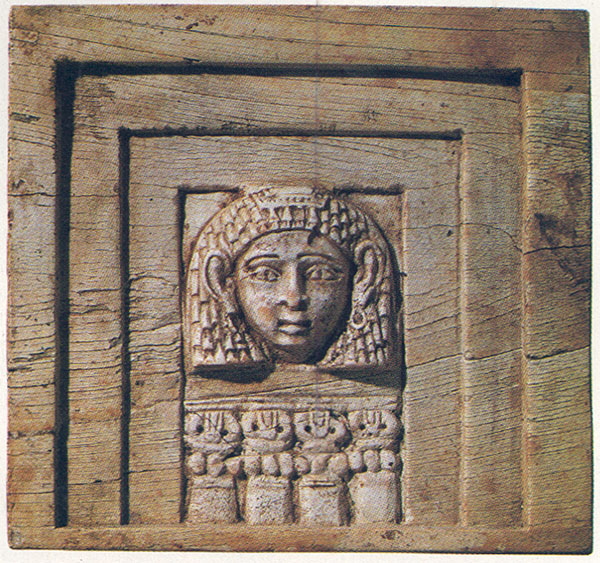
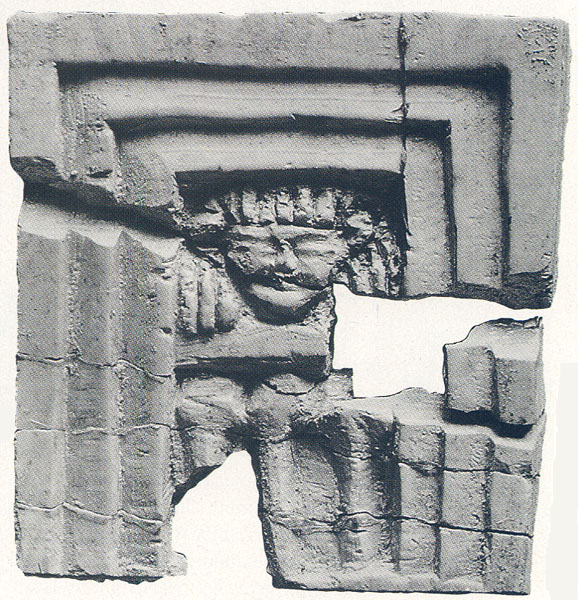
Applying eye makeup (kohl) and brushing one’s hair are often connected to flirting in Hebraic thinking. Isaiah 3:16, Jeremiah 4:30, Ezekiel 23:40 and Proverbs 6:24–26 provide examples of women who bat their painted eyes to lure innocent men into adulterous beds. Black kohl is widely incorporated in Bible passages as a symbol of feminine deception and trickery, and its use to paint the area above and below the eyelids is generally considered part of a woman’s arsenal of artifice. In Jezebel’s case, however, the cosmetic is more than just an attempt to accentuate the eyes. Jezebel is donning the female version of armor as she prepares to do battle. She is a woman warrior, waging war in the only way a woman can. Whatever fear she may have of Jehu is camouflaged by her war paint.
Her grooming continues as she dresses her hair, symbol of a woman’s seductive power. When she dies, she wants to look her queenly best. She is in control here, choosing the manner in which her attacker will last see and remember her.
The third action Jezebel takes before Jehu arrives is to sit at her upper window. The Deuteronomist may be deliberately conjuring up images to associate Jezebel with other disfavored women. For example, contained within Deborah’s victory ode is the story of the unfortunate mother of the enemy general Sisera. Waiting at home, Sisera’s unnamed mother looks out the window for her son to return: “Through the window peered Sisera’s mother, behind the lattice she whined” (Judges 5:28). Her ladies-in-waiting express the hope that Sisera is detained because he is raping Israelite women and collecting booty (Judges 5:29–30). In truth, Sisera is already dead, his skull shattered by Jael and her tent peg (Judges 5:24–27). King David’s wife Michal also looks through her window, watching her husband dance around the Ark of the Covenant as it is triumphantly brought into Jerusalem, “and she despised him for it” (2 Samuel 6:16). Michal does not understand the people’s euphoria over the arrival of the Ark in David’s new capital; she can only feel anger that her husband is dancing about like one of the “riffraff” (2 Samuel 6:20). Generations later, Jezebel also appears at her window, conjuring up images of Sisera’s mother and Michal, two unpopular biblical women.
The image of the woman at the window also suggests fertility goddesses, abominations to the Deuteronomist and well known to the general public in ancient Israel. Ivory plaques, dating to the Iron Age and depicting a woman peering through a window, have been discovered in Khorsabad, Nimrud and Samaria, Jezebel’s second home.6 The connection between idol worship, goddesses and the woman seated at the window would not have been lost on the Deuteronomist’s audience.
Sitting at her window, Jezebel is seemingly rendered powerless while the active patriarchal world functions beyond her reach.7 But a more sympathetic reading of the situation suggests that Jezebel has determined the superior angle from which she will be viewed by Jehu, thus giving the queen mastery of the situation.
Positioned at the balcony window, the queen does not remain silent as the usurper Jehu arrives into town. She taunts him by calling him Zimri, the name of the unscrupulous predecessor of Omri, Jezebel’s father-in-law. Zimri ruled Israel for only seven days after murdering the king (Elah) and usurping the throne. “Is all well, Zimri, murderer of your master?” Jezebel asks Jehu (2 Kings 9:31). Jezebel knows that all is not well, and her sarcastic, sharp-tongued insult of Jehu disproves any interpretation that she has dressed in her finest to seduce him. She has contempt for Jehu. Unlike many biblical wives, who remain silent, Jezebel has a distinct voice, and she is unafraid to articulate her view of Jehu as a renegade and regicide.
To demonstrate his authority, Jehu orders Jezebel’s eunuchs to throw her out of the window: “They threw her down; and her blood spattered on the wall and on the horses, and they trampled her. Then [Jehu] went inside and ate and drank” (2 Kings 9:33–34). In this highly symbolic political action, the once mighty Jezebel is shoved out of her high station to the ground below. Her ejection from the window represents an eternal demotion from her proper place as one of the Bible’s most influential women.
Jezebel’s body is left in the street as Jehu celebrates his victory. Later, perhaps because the new monarch does not wish to begin his reign with such a disrespectful act against a woman, or perhaps because he realizes the danger in setting a precedent for ill treatment of a dead ruler’s remains, Jehu orders Jezebel’s burial: “Attend to that cursed woman and bury her, for she was a king’s daughter” (2 Kings 9:34). Jezebel is not to be remembered as a queen or even as the wife of a king. She is only the daughter of a foreign despot. This is intended as another blow by the Deuteronomist, an attempt to marginalize a formidable woman. When the king’s men come to bury Jezebel, it is too late: “All they found of her were the skull, the feet, and the hands” (2 Kings 9:35). Jehu’s men inform the king that Elijah’s prophecies have been fulfilled: “It is just as the Lord spoke through His servant Elijah the Tishbite: The dogs shall devour the flesh of Jezebel in the field of Jezreel; and the carcass of Jezebel shall be like dung on the ground, in the field of Jezreel, so that none will be able to say: ‘This was Jezebel’” (2 Kings 9:36–37).
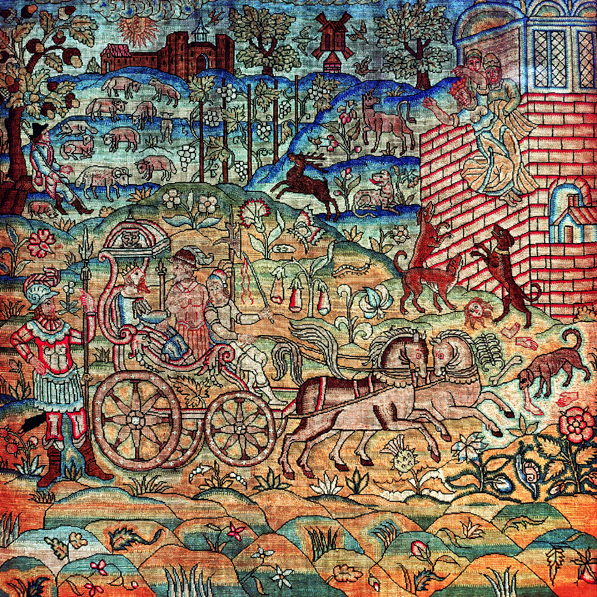
While the biblical storyteller wants the final images of Jezebel to memorialize her as a brazen hussy, a sympathetic interpretation of her behavior has more credibility. When all a person has left in life is the way she faces her death, her final actions speak volumes about her character. Jezebel departs this earth every inch a queen. Now an aging grandmother, it is highly unlikely that she has libidinous designs on Jehu or even entertains the notion of becoming the young king’s paramour. As the daughter, wife, mother, mother-in-law and grandmother of kings, Jezebel would understand court politics well enough to realize that Jehu has far more to gain by killing her than by keeping her alive. Alive, the dowager queen could always serve as a rallying point for anyone unhappy with Jehu’s reign. The queen harbors no illusions about her chances of surviving Jehu’s bloody coup d’état.
How bad was Jezebel? The Deuteronomist uses every possible argument to make the case against her. When Ahab dies, the Deuteronomist is determined to show that “there never was anyone like Ahab, who committed himself to doing what was displeasing to the Lord, at the instigation of his wife Jezebel” (1 Kings 21:25). It is interesting that Ahab is not held responsible for his own actions.8 He goes astray because of a wicked woman. Someone has to bear the writer’s vituperation concerning Israel’s apostasy, and Jezebel is chosen for the job.
Every biblical word condemns her: Jezebel is an outspoken woman in a time when females have little status and few rights; a foreigner in a xenophobic land; an idol worshiper in a place with a Yahweh-based, state-sponsored religion; a murderer and meddler in political affairs in a nation of strong patriarchs; a traitor in a country where no ruler is above the law; and a whore in the territory where the Ten Commandments originate.
Yet there is much to admire in this ancient queen. In a kinder analysis, Jezebel emerges as a fiery and determined person, with an intensity matched only by Elijah’s. She is true to her native religion and customs. She is even more loyal to her husband. Throughout her reign, she boldly exercises what power she has. And in the end, having lived her life on her own terms, Jezebel faces certain death with dignity.
MLA Citation
Footnotes
Asherah is the biblical name for Astarte, a Canaanite fertility goddess and consort of Baal. The term asherah, which appears at least 50 times in the Hebrew Bible (it is often translated as “sacred post”), is used to refer to three manifestations of this goddess: an image (probably a figurine) of the goddess (eg., 2 Kings 21:7); a tree (Deuteronomy 16:21); and a tree trunk, or sacred post (Deuteronomy 7:5, 12:3). See Ruth Hestrin, “Understanding Asherah—Exploring Semitic Iconography,” BAR 17:05.
In the Septuagint, 1 and 2 Samuel and 1 and 2 Kings are all included in Kings, which therefore has four books, 1–4 Kings.
Endnotes
For a fuller treatment of Jezebel, see Janet Howe Gaines, Music in the Old Bones: Jezebel Through the Ages (Carbondale, IL: Southern Illinois Univ. Press, 1999).
All references to the Bible, unless otherwise noted, are to Tanakh: The Holy Scriptures: The New JPS Translation According to the Traditional Hebrew Text (Philadelphia: Jewish Publication Society, 1985).
The translation of the Greek text is my own. According to Sir Lancelot C.L. Brenton (The Septuagint with Apocrypha: Greek and English, 3rd ed. [Peabody, MA: Hendrickson, 1990], p. 478), the translation of the entire line is “And Jezabel sent to Eliu, and said, If thou art Eliu and I am Jezabel, God do so to me, and more also, if I do not make thy life by this time tomorrow as the life of one of them.”
For a discussion of Phoenician customs, see George Rawlinson, History of Phoenicia (London: Longmans, 1889).
As corroborating evidence, see the story of David’s plot to kill Uriah the Hittite in 2 Samuel 11:14–17. Like Jezebel, David writes letters that contain details of his scheme. David intends to enlist help from the entire regiment as confederates who are to “draw back from” Uriah, but Joab makes a shrewd and subtle change in the plan so that it is less likely to be discovered.
Eleanor Ferris Beach, “The Samaria Ivories, Marzeah, and Biblical Text,” Biblical Archaeologist 56:2 (1993), pp. 94–104.
For an excellent, detailed discussion of biblical imagery concerning women seated at windows, see Nehama Aschkenasy, Woman at the Window (Detroit: Wayne State Univ. Press, 1998).
For a reassessment of Ahab’s character based on the archaeological remains of his building projects and extrabiblical texts, see Ephraim Stern, “The Many Masters of Dor, Part 2: How Bad Was Ahab?” BAR 19:02.

